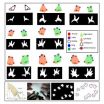(Press-News.org) Professor Alfirevic from the Department of Women's and Children's Health at the University of Liverpool argues that although premature children tend to have lower cognitive ability than their peers and 14.9 million are born prematurely each year worldwide, is it really possible to stop spontaneous preterm labour?
In an accompanying research paper, Haas and colleagues carried out a review of several controlled trials to determine the most cost-effective tocolytic agent. Tocolytic drugs are used to delay delivery for up to 48 hours. This allows time for doctors to give steroids to speed up the baby's lung development and to enable the mother to be transferred to a centre with a neonatal intensive care unit.
And while Professor Alfirevic appreciates that it is important to choose the right tocolytic drug, he argues that Haas and colleagues' study found no evidence that tocolytic drugs improve rates of newborn illness or death.
Furthermore, a separate study which looked at mothers who took antibiotics (erythromycin and co-amoxiclav) to prevent premature birth found an unexpected increase in cerebral palsy among the children.
Professor Alfirevic suggests that instead of focusing studies on the success of tocolytic drugs on delaying preterm birth, larger trials are needed to determine the clinically meaningful effects of the drugs. He says that clinicians "need proof of a sustained improvement in important health outcomes that matter to women" and the evidence, that tocolytics may allow mothers more time to be moved to specialist neonatal units, may not be enough.
Professor Alfirevic says that despite Haas and colleagues' "well done" meta-analysis, the Royal College of Obstetricians and Gynaecologists' 2011 recommendation that it is reasonable not to use tocolytics still stands.
He concludes that clinicians should be honest and tell women that they are giving them drugs that they hope will prolong pregnancy, but they may not make their babies healthier. And he hopes that "babies are not coming to greater harm by our attempts to keep them in utero."
### END
Is delaying premature delivery safe?
1 professor questions the use of drugs that delay premature birth
2012-10-10
ELSE PRESS RELEASES FROM THIS DATE:
Strategies proposed to improve impact of comparative effectiveness studies
2012-10-10
Comparative effectiveness research conducted over the past decade has had a limited impact on the way medical care is delivered, but many opportunities exist to help doctors and others in the medical system translate such research into better patient care, according to a new RAND Corporation study.
Comparative effectiveness research is designed to improve health care decisions by providing evidence on the effectiveness, benefits and harms of different treatment options. The studies may compare drugs, medical devices, tests and surgical procedures to determine whether ...
USC develops software to facilitate large-scale biological inquiry
2012-10-10
The world's leading mass spectrometer manufacturers have agreed to license technology that enabled University of Southern California (USC) researchers to develop software that, for the first time, allows scientists to easily use and share research data collected across proprietary platforms.
The ProteoWizard Toolkit, a cross-platform set of libraries and applications designed to facilitate the sharing of raw data and its analysis, is expected to bolster large-scale biological research and help improve the understanding of complex diseases like cancer.
"Think of it like ...
Swimming with hormones: Researchers unravel ancient urges that drive the social decisions of fish
2012-10-10
Researchers have discovered that a form of oxytocin—the hormone responsible for making humans fall in love—has a similar effect on fish, suggesting it is a key regulator of social behaviour that has evolved and endured since ancient times.
The findings, published in the latest edition of the journal Animal Behaviour, help answer an important evolutionary question: why do some species develop complex social behaviours while others spend much of their lives alone?
"We know how this hormone affects humans," explains Adam Reddon, lead researcher and a graduate student ...
LAPhil and USC neuroscientists launch 5-year study of music education and child brain development
2012-10-10
The Los Angeles Philharmonic Association, the USC Brain and Creativity Institute and Heart of Los Angeles (HOLA) are delighted to announce a longitudinal research collaboration to investigate the emotional, social and cognitive effects of musical training on childhood brain development.
The five-year research project, Effects of Early Childhood Musical Training on Brain and Cognitive Development, will offer USC researchers an important opportunity to provide new insights and add rigorous data to an emerging discussion about the role of early music engagement in learning ...
Potential debt problems more common among the educated, study suggests
2012-10-10
COLUMBUS, Ohio - Before the financial crash of 2008, it was highly educated Americans who were most likely to pile on unmanageable levels of debt, a new study suggests.
Overall, the percentage of Americans who were paying more than 40 percent of their income for debts like mortgages and credit card bills increased from about 17 percent in 1992 to 27 percent in 2008.
But college-educated people were more likely than those with high school or less education to be above this 40 percent threshold - considered to be a risky amount of debt for most households.
The association ...
Synthetic liver enzyme could result in more effective drugs with fewer side effects
2012-10-10
Medicines could be made to have fewer side effects and work in smaller doses with the help of a new technique that makes drug molecules more resistant to breakdown by the human liver.
Researchers based at Princeton University reported in the journal Science that they created a synthetic enzyme that acts as a catalyst to replace certain hydrogen atoms of a drug molecule with fluorine atoms. This swap stabilizes the molecule and makes it resistant to the liver enzymes that can inactivate a drug or create toxic byproducts.
[More information is available at http://www.princeton.edu/main/news/archive/S34/97/92E16.]
"Putting ...
Mount Sinai School of Medicine study shows vitamin C prevents bone loss in animal models
2012-10-10
Researchers at Mount Sinai School of Medicine have shown for the first time in an animal model that vitamin C actively protects against osteoporosis, a disease affecting large numbers of elderly women and men in which bones become brittle and can fracture. The findings are published in the October 8 online edition of PLoS ONE.
"This study has profound public health implications, and is well worth exploring for its therapeutic potential in people," said lead researcher Mone Zaidi, MD, Professor of Medicine (Endocrinology, Diabetes and Bone Disease, and of Structural and ...
Interstellar travelers of the future may be helped by MU physicist's calculations
2012-10-10
Former President Bill Clinton recently expressed his support for interstellar travel at the 100 Year Spaceship Symposium, an international event advocating for human expansion into other star systems. Interstellar travel will depend upon extremely precise measurements of every factor involved in the mission. The knowledge of those factors may be improved by the solution a University of Missouri researcher found to a puzzle that has stumped astrophysicists for decades.
"The Pioneer spacecraft, two probes launched into space in the early 70s, seemed to violate the Newtonian ...
Scripps research scientists devise screening method to aid RNA drug development research
2012-10-10
JUPITER, FL, October 9, 2012 – Scientists from the Florida campus of The Scripps Research Institute (TSRI) have developed a new method of screening more than three million combinations of interactions between RNA and small molecules to identify the best targets on RNA as well as the most promising potential drug compounds. This novel technology may lead to more efficient drug development.
The study was published in the October 9, 2012 issue of the journal Nature Communications.
RNA has multiple biological functions, including encoding and translating proteins from genes ...
New interactive system detects touch and gestures on any surface
2012-10-10
WEST LAFAYETTE, Ind. – People can let their fingers - and hands - do the talking with a new touch-activated system that projects onto walls and other surfaces and allows users to interact with their environment and each other.
The system identifies the fingers of a person's hand while touching any plain surface. It also recognizes hand posture and gestures, revealing individual users by their unique traits.
"Imagine having giant iPads everywhere, on any wall in your house or office, every kitchen counter, without using expensive technology," said Niklas Elmqvist, an assistant ...
LAST 30 PRESS RELEASES:
New software sheds light on cancer’s hidden genetic networks
UT Health San Antonio awarded $3 million in CPRIT grants to bolster cancer research and prevention efforts in South Texas
Third symposium spotlights global challenge of new contaminants in China’s fight against pollution
From straw to soil harmony: International team reveals how biochar supercharges carbon-smart farming
Myeloma: How AI is redrawing the map of cancer care
Manhattan E. Charurat, Ph.D., MHS invested as the Homer and Martha Gudelsky Distinguished Professor in Medicine at the University of Maryland School of Medicine
Insilico Medicine’s Pharma.AI Q4 Winter Launch Recap: Revolutionizing drug discovery with cutting-edge AI innovations, accelerating the path to pharmaceutical superintelligence
Nanoplastics have diet-dependent impacts on digestive system health
Brain neuron death occurs throughout life and increases with age, a natural human protein drug may halt neuron death in Alzheimer’s disease
SPIE and CLP announce the recipients of the 2025 Advanced Photonics Young Innovator Award
Lessons from the Caldor Fire’s Christmas Valley ‘Miracle’
Ant societies rose by trading individual protection for collective power
Research reveals how ancient viral DNA shapes early embryonic development
A molecular gatekeeper that controls protein synthesis
New ‘cloaking device’ concept to shield sensitive tech from magnetic fields
Researchers show impact of mountain building and climate change on alpine biodiversity
Study models the transition from Neanderthals to modern humans in Europe
University of Phoenix College of Doctoral Studies releases white paper on AI-driven skilling to reduce burnout and restore worker autonomy
AIs fail at the game of visual “telephone”
The levers for a sustainable food system
Potential changes in US homelessness by ending federal support for housing first programs
Vulnerability of large language models to prompt injection when providing medical advice
Researchers develop new system for high-energy-density, long-life, multi-electron transfer bromine-based flow batteries
Ending federal support for housing first programs could increase U.S. homelessness by 5% in one year, new JAMA study finds
New research uncovers molecular ‘safety switch’ shielding cancers from immune attack
Bacteria resisting viral infection can still sink carbon to ocean floor
Younger biological age may increase depression risk in older women during COVID-19
Bharat Innovates 2026 National Basecamp Showcases India’s Most Promising Deep-Tech Ventures
Here’s what determines whether your income level rises or falls
SCIE indexation achievement: Celebrate with Space: Science & Technology
[Press-News.org] Is delaying premature delivery safe?1 professor questions the use of drugs that delay premature birth

